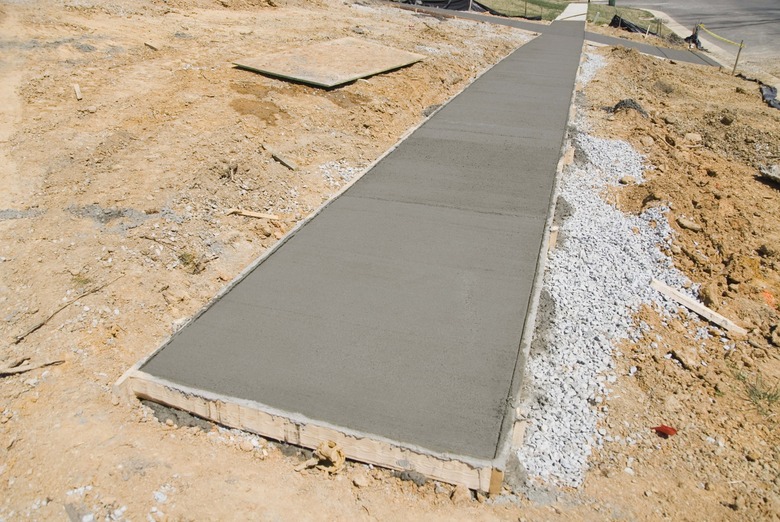How To Calculate The Percent Of Pitch On Concrete Slopes
Things Needed
-
Tape measure
-
String
-
Builder's level
-
Tent pin
Tip
A wooden stick works well as an alternative to a tent pin.
The units of measurement do not matter so long as you use the same units for length and height. The process is the same for feet, miles, meters, fathoms, hands, etc.
Use a measuring stick, such as a yard ruler, to determine the change in height if holding the string and measuring to the ground becomes too difficult.
Warning
Keep the string taught when ascertaining the horizontal position.
Percentage is one of several ways to describe a change in height, along with angle and the ratio of height change to distance. Two key measurements determine the pitch of a concrete surface: the surface length and the change in height over the length. When these are expressed as a ratio such as 1:25, it means that the slope varies by one unit of height across 25 units of length. When pitch is presented as a percentage, it expresses the difference in height over an imaginary length of 100 units.
Step 1
Mark the point on the ground from which the slope measurement begins. Insert a tent pin firmly into the ground at this point and attach one end of a ball of string to the pin.
Step 2
Hold the string and walk away from the pin, heading down the slope. Stop either when the end of the slope is reached or when you have covered a convenient distance. Measure this distance and record it. For example, a steeply sloping concrete surface that continues at the same angle for 300 feet need not be measured in its entirety. Measuring a 10-foot section should suffice.
Step 3
Stand with the string held directly above the finishing point for the length measurement. Stretch the string taught and then use a builder's level to be certain it is horizontal. With the string taught and horizontal, measure vertically from where you are holding the string to the ground. Record this value as the change in height.
Step 4
Convert the change of height over the distance into a percentage pitch using the following equation: Percentage pitch = (height change / length) x 100.
For example, a slope 20 feet long that drops by 1 1/2 feet has a percentage pitch of 7.5 percent — (1.5 / 20) x 100 = 7.5.
Likewise a slope 50 inches long that gains 5 inches in height has a percentage pitch of 10 percent — (5 / 50) x 100 = 10.
